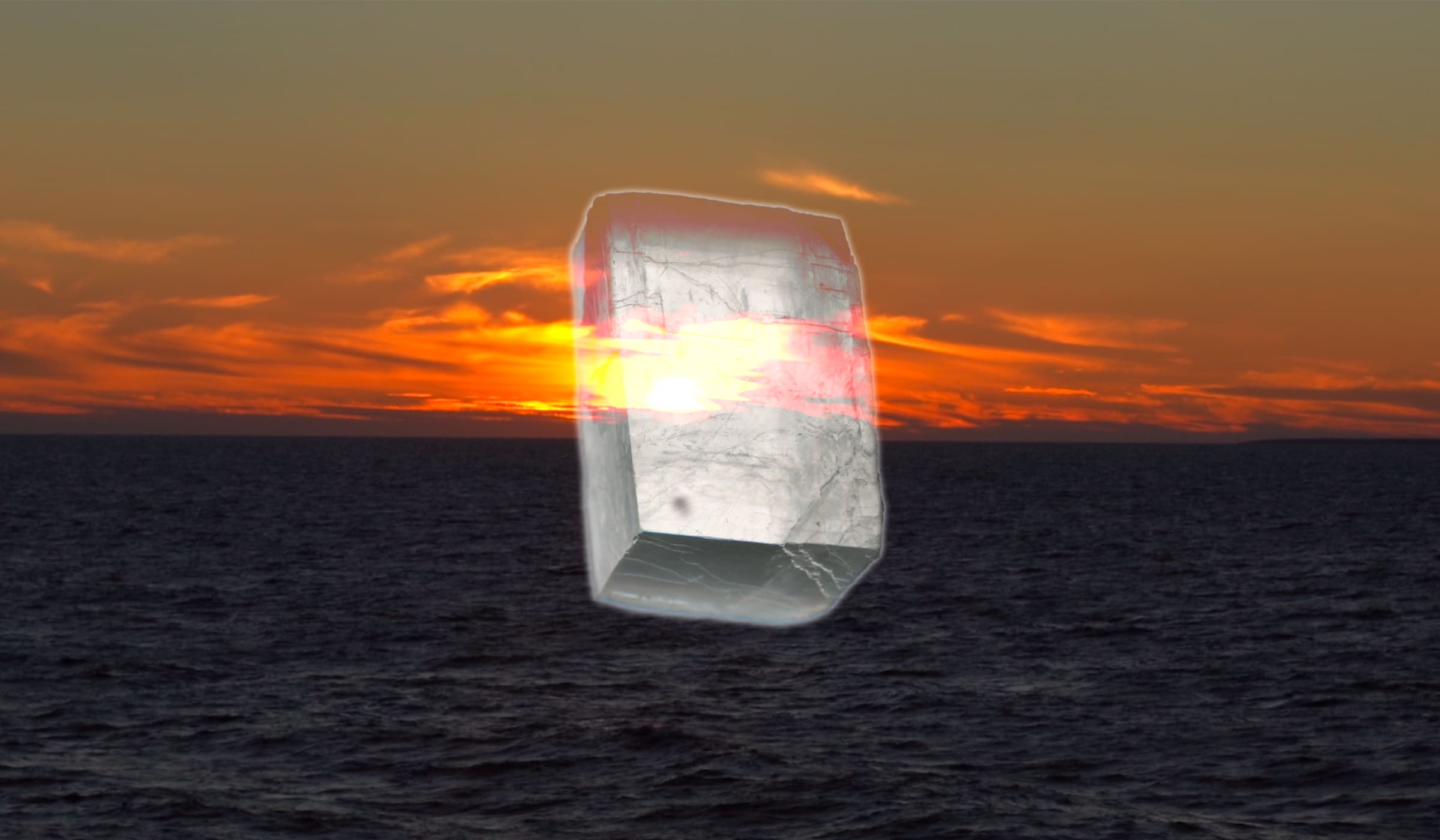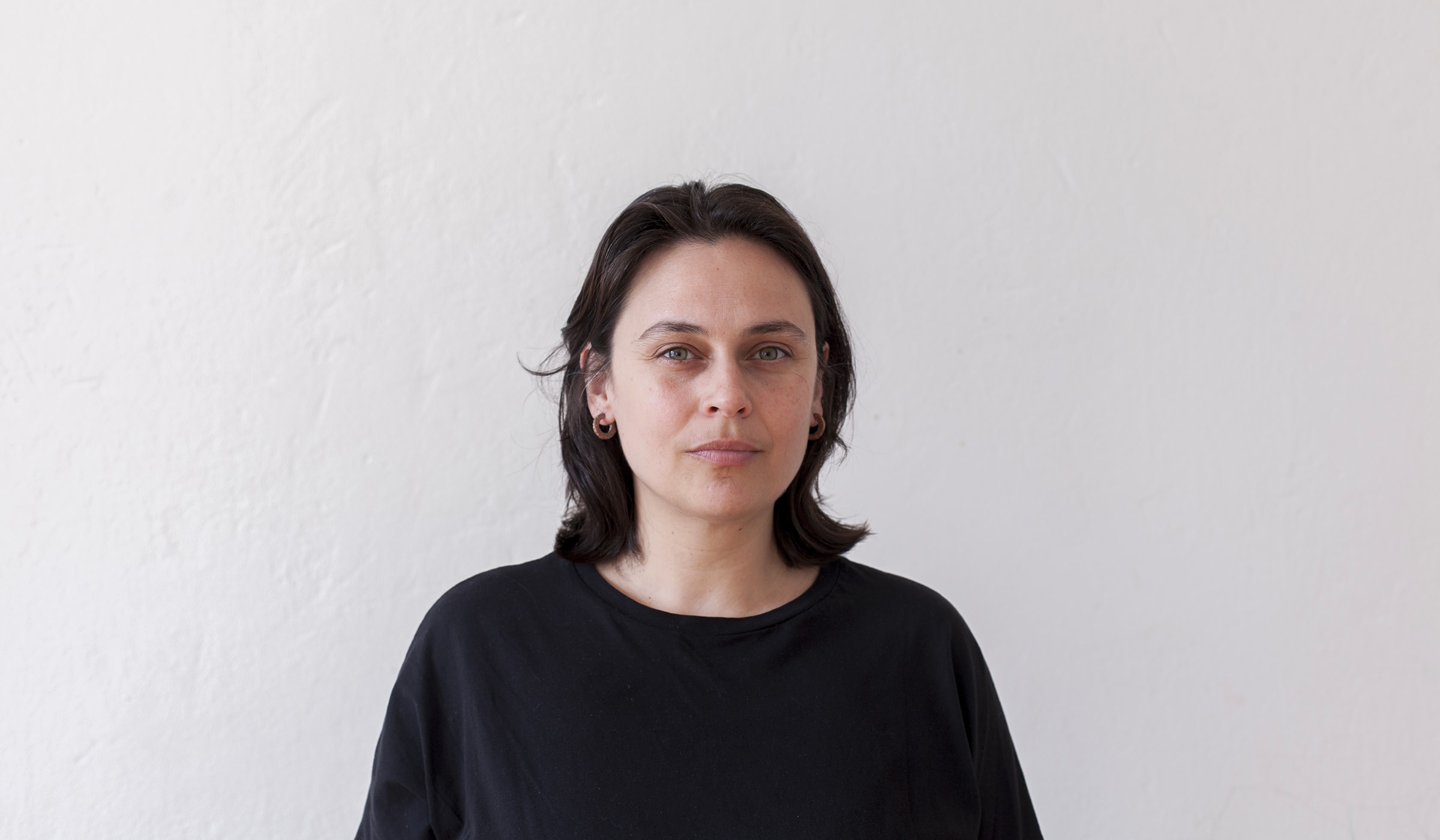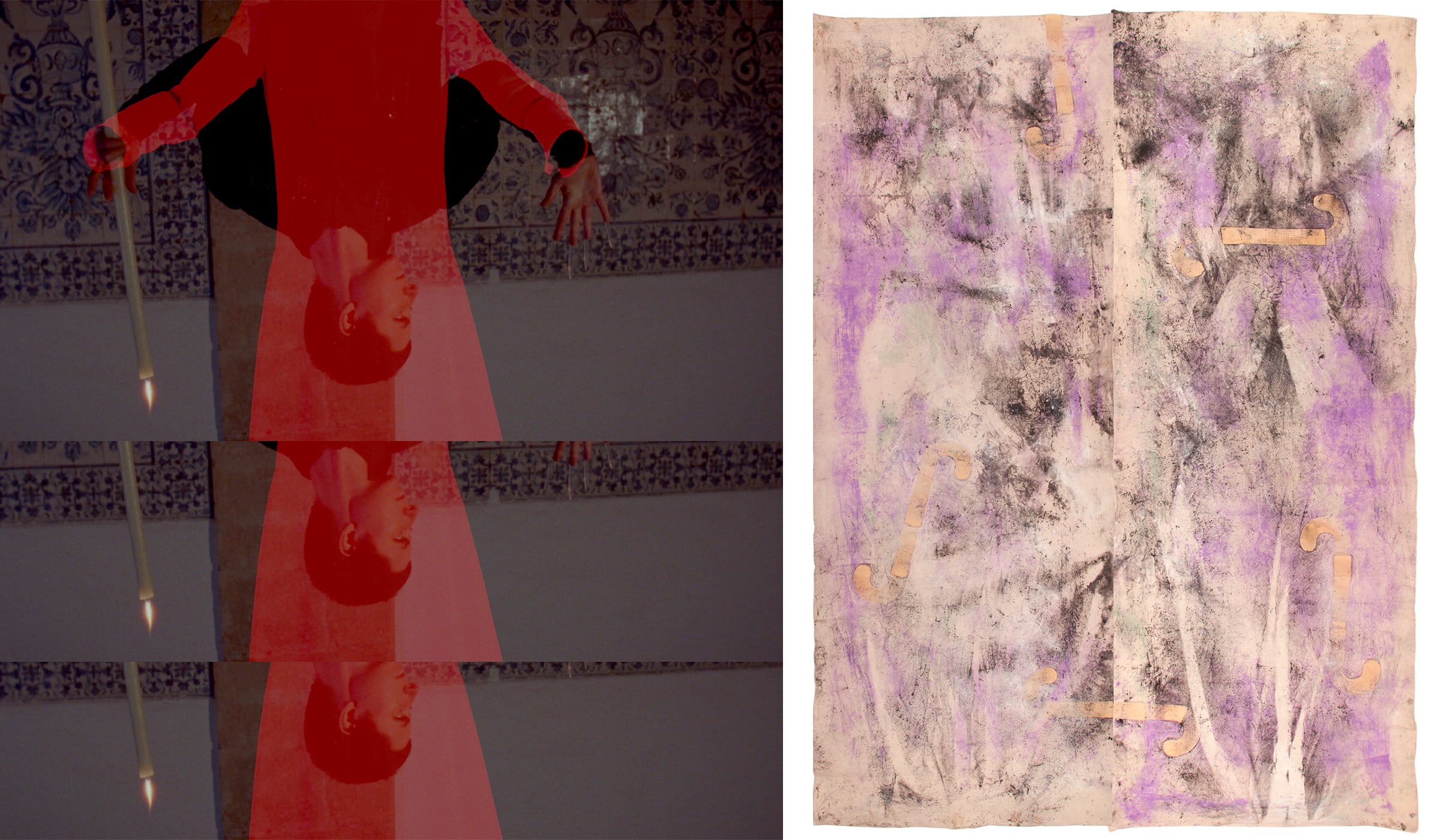A striking arrival in Jessica Warboys’s evolving cast of symbolic objects is a long, double-ended black candle. Molded with a hook at each end, it suggests a staff for navigating twinned worlds. As its two flames make steady progress along their shared wick, what they’re moving towards simultaneously disappears. For the UK-born, Norway-based artist – whose exhibition at the Chapelle des Petits-Augustins des Beaux-Arts de Paris promises to be a highlight of Paris+ par Art Basel’s Public Program – ‘[the candle] proposes the sense of a chase, a pursuit, perhaps of knowledge, of love,’ she says. ‘Its power is both finite and infinite: We don’t actually see it burn away.’

Since the 2000s, Warboys has been cultivating this state of excited suspension between, in her words, the ‘graspable and ungraspable’ through a diffuse, purposefully restless practice. Across painting, film, performance, glasswork, sculpture, textile, sound, and more, she has claimed the liminal as her territory. She tracks the nebulous realms ‘between gaps in your perception, or [between] conscious and unconscious,’ she says, or ‘[the] wild spaces between order and order.’ Her preferred filmic locations – megalithic sites, ancient centers of cloistered learning like libraries or convents, dense forests, and wind-blown bluffs – are charged with centuries if not millennia of human imaginings; they are loci of spiritual belief, superstition, or folk tale. The objects she makes, meanwhile, hover between artwork and theatrical prop, often drawing on craft traditions like weaving or furniture-making. Then there are the literal in-between zones where she creates her large, abstract, unstretched paintings: the space flanked by land and sea, or bank and river, where she soaks her canvases, adds mineral pigments, and lets tide, flow, wind, vegetation, and the physical movement of the works across sand and earth contribute to the mark-making.
Warboys’s long-term interest in the places where nature and human imagination meet powers her enigmatic and seductively witchy 16mm film and video installation presented in ‘THIS TAIL GROWS AMONG RUINS,’ her exhibition for Paris+ par Art Basel this month. As we follow lit candles through a nocturnal upside-down world that unfolds across three screens, the imagery shifts from a Nosferatu-esque, red-robed figure to a horned silhouette on the wall of a cave, and a tall candle that becomes a unicorn horn, held aloft on its bearer’s head as they walk through a forest. The much-mythologized creatures that inspired the project and elude the camera, though, are colonies of bats that inhabit the 17th century monastery Santa Clara-a-Vehla and the Baroque Biblioteca Joanina in Coimbra, Portugal, where the film was partly shot. Every night, the library guardians roll out leather covers to protect the 18th century tables from bat scat, as if it were ‘a ritual act…performed with care and ceremony,’ Warboys observes. Far from folklore’s abhorred intruders, these bats eat insects that would otherwise destroy manuscripts and have been cherished guests since at least the 19th century.

Warboys says she was drawn to this symbiotic human-bat relationship within the library, as well as to bats’ resonance in our cultural imaginary. ‘The ways we have projected onto bats, the ways bats have impacted us: That’s another kind of co-existing,’ she points out. Her regular collaborator and partner, Morten Norbye Halvorsen, has created a suitably spooky soundtrack using ultrasound to amplify bat calls that would otherwise be indiscernible to human ears. This film triptych with its ‘song of the night’ will be installed in the exhibition space of Beaux-Arts de Paris, the Chapelle des Petits-Augustins, the lone surviving building of another 17th century religious house: a convent where nuns once sang through the hours. ‘There’s a call from one space to another,’ she says. ‘Each time a work travels and is shown, it accumulates something of its new context.’

The repetition through which meaning is embedded in objects or places, mythic or historical figures is a key modus operandi for Warboys. For instance, SEA RIVER O (2023) – an installation of sea and river paintings that accompanies the artist’s new film piece – reuses canvases that previously have been exhibited individually. Here, these unstretched works will be placed in a loose patchwork and shown horizontally on a plinth, their frayed edges overlapping. With their expressionist floods of color, the paintings function as indexical records of the process of their own making, which the artist doesn’t otherwise document. Warboys’s interest in the creative journey over the fixed destination might be traced back to her time as a student at London’s Slade School of Fine Art in 2004, under the tutelage of sculptors like Phyllida Barlow. ‘It made me very conscious of process,’ she says.
Within exhibitions, too, the status of her objects shifts depending on how they are used and what we are invited to see in them. In Pageant Roll (2012), for instance – the film commissioned for Warboys’s presentation at Hauptbahnhof, Kassel, for Documenta 13 – the setting is the Cornish stone circle known as the Nine Maidens. A painted red square has snuck between the megaliths while a fringed parasol rolls across a field. They’re more like characters than props. Encountered again in the flesh in the gallery, the red square takes on the status of sculpture. Recognizing it, we assume its significance – although in Warboys’s poetic, elliptical universe, the import of what recurs, be it an object or a color, is often one that we must sense rather than fathom. Again, as with the double-ended candle, the endpoint or revelation feels just out of reach.

Circular motifs – including hoops, eggs, and discs – are favored symbols in Warboys’s visual lexicon. Yet, while the circle’s place in culture is as timeless as the moon (another reference in her work), the artist points out that ‘it’s more about the transformative potential of an object than what it suggests in a more archetypal way. Objects return in another form. A hoop can unravel and become a snake. Candle wax can move from solid to liquid and back.’
In Pageant Roll, there’s a glimpse of a disembodied black tail poking out from behind a curtain, quite literally among the footage of ruins. It’s the offcut of a furry hat that the artist discovered by chance and has since evolved into that black candle. ‘I need this sense of instability, to be able to create new networks and possibilities,’ says Warboys, for whom inconclusiveness is paramount. ‘I want to be able to keep things alive and vivid as material that can keep shifting – not exactly transcend itself, but maybe.’
Jessica Warboys will present ‘THIS TAIL GROWS AMONG RUINS’ at the Chapelle des Petits-Augustins des Beaux-Arts de Paris with Gaudel de Stampa (Paris), as part of the public program of Paris+ par Art Basel 2023. The exhibition will be on view from October 17 to 22, 2023.
Skye Sherwin is an art writer based in Rochester, UK. She contributes regularly to The Guardian and numerous art publications.
Published on October 4, 2023.
Caption for full-bleed images, from top to bottom: 1. Jessica Warboys, THIS TAIL GROWS AMONG RUINS, 2023. 2. River Painting, Fossbekken, 2021. Both courtesy of the artist and Gaudel de Stampa.